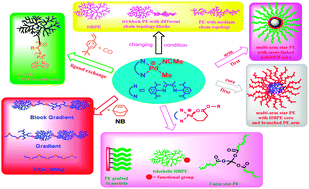Designing polyethylenes of complex chain architectures via Pd–diimine-catalyzed “living” ethylenepolymerization
Abstract
Polymer chain architecture is a critically important chain parameter governing intrinsically the properties and applications of

* Corresponding authors
a
Bharti School of Engineering, Laurentian University, Sudbury, Ontario P3E 2C6, Canada
E-mail:
zye@laurentian.ca
Fax: +1-705-675-4862
Polymer chain architecture is a critically important chain parameter governing intrinsically the properties and applications of

 Please wait while we load your content...
Something went wrong. Try again?
Please wait while we load your content...
Something went wrong. Try again?
Z. Ye, L. Xu, Z. Dong and P. Xiang, Chem. Commun., 2013, 49, 6235 DOI: 10.1039/C3CC42517G
To request permission to reproduce material from this article, please go to the Copyright Clearance Center request page.
If you are an author contributing to an RSC publication, you do not need to request permission provided correct acknowledgement is given.
If you are the author of this article, you do not need to request permission to reproduce figures and diagrams provided correct acknowledgement is given. If you want to reproduce the whole article in a third-party publication (excluding your thesis/dissertation for which permission is not required) please go to the Copyright Clearance Center request page.
Read more about how to correctly acknowledge RSC content.
 Fetching data from CrossRef.
Fetching data from CrossRef.
This may take some time to load.
Loading related content
